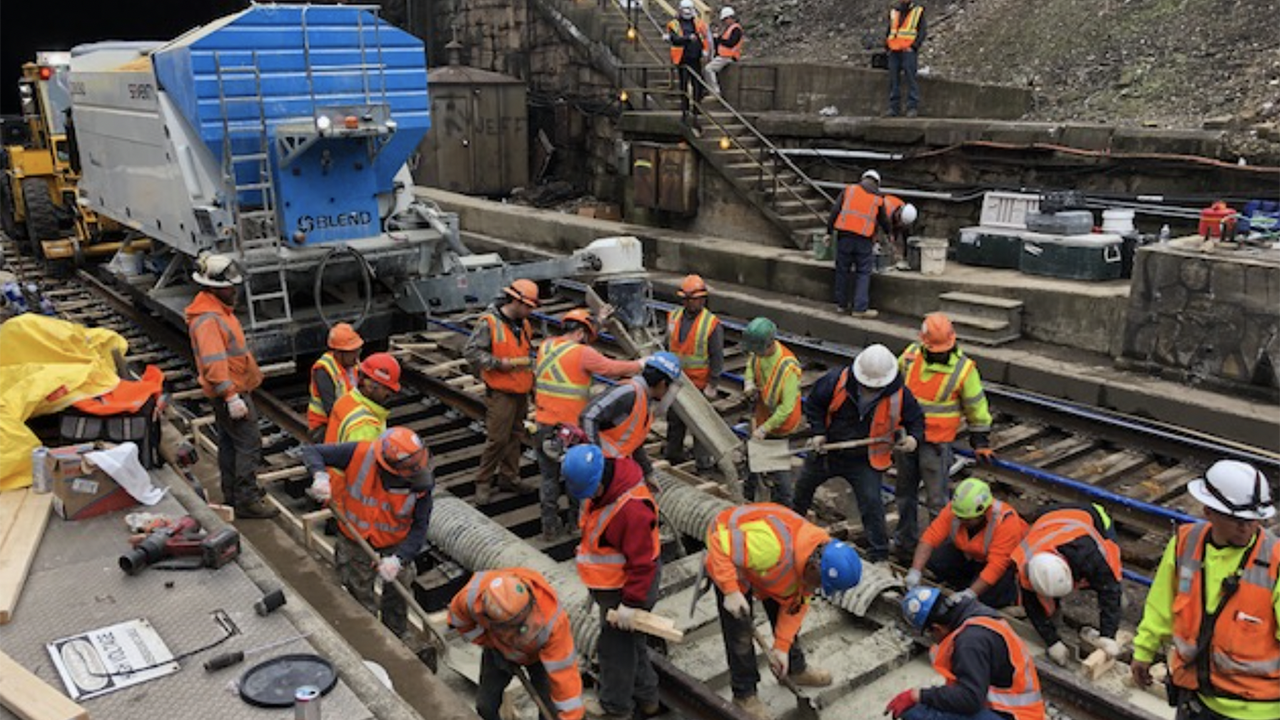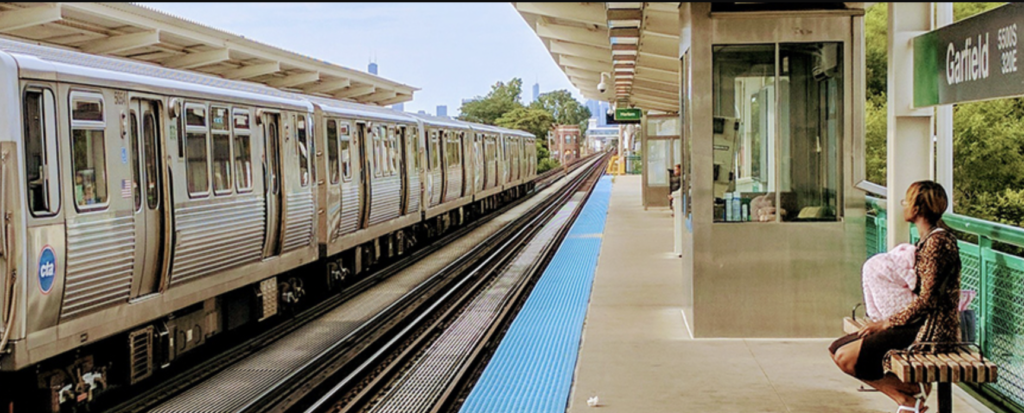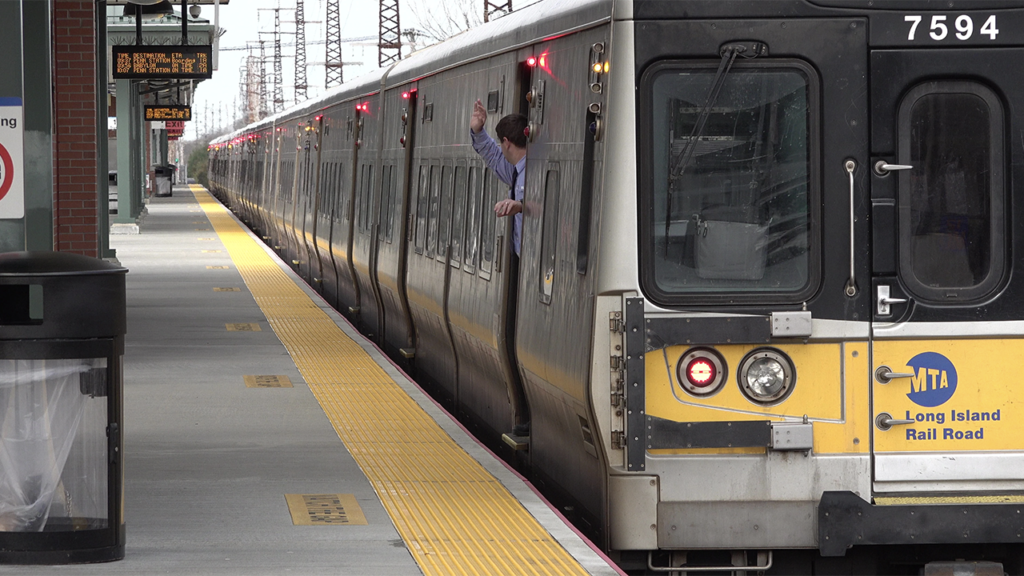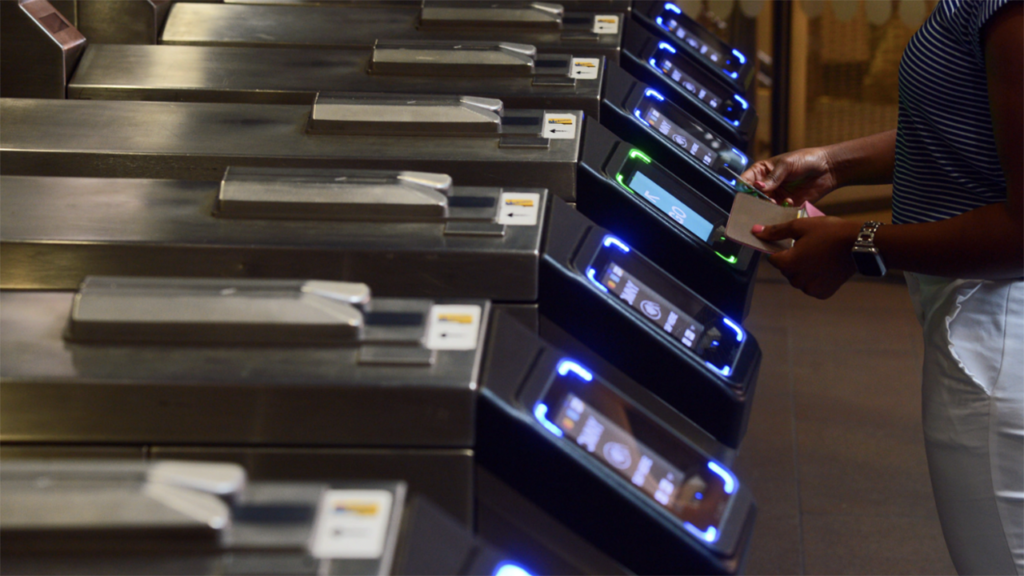
Transit Briefs: Amtrak OIG, FTA, NYMTA
Written by Marybeth Luczak, Executive Editor
A new Amtrak OIG report finds that Amtrak “faces challenges with the systems and processes it uses to track and manage costs for capital projects, which hinder project teams from identifying emerging cost overruns.” (Photograph Courtesy of Amtrak OIG, via Twitter)
“Amtrak is strengthening its project cost management, but can better organize costs and improve guidance,” according to the latest Amtrak Office of Inspector General (OIG) report. Also, the San Diego Association of Governments (SANDAG), Chicago Transit Authority (CTA) and Cincinnati Connector Streetcar will receive funding through the Federal Transit Administration’s (FTA) Areas of Persistent Poverty Program; and New York Metropolitan Transportation Authority (MTA) will increase subway fares and implement recommendations of the Blue-Ribbon Panel Report on Fare and Toll Evasion.
Amtrak OIG on July 19 released a new report (above) finding that “America’s Railroad” has efforts under way to improve tracking and managing capital project costs but faces challenges with the systems and processes it uses.
Amtrak’s Capital Delivery department is developing a single project management system that it anticipates will replace or integrate at least 12 systems to address the challenge project teams currently have tracking costs across multiple systems, according to the Office of Inspector General. However, the office said it identified additional challenges with the systems and processes that the Capital Delivery department uses for project cost management. “Specifically, detailed and standardized cost data are not readily available to project teams, and project cost management guidance is outdated,” the office reported. For example, “project cost data were inconsistent across multiple systems, and company systems limit Amtrak’s ability to easily tie costs to specific work activities.”
Such challenges, Amtrak OIG reported, “hinder project teams and company executives from obtaining consistent, detailed cost data to manage the company’s portfolio of capital work—foundational capabilities that are critical to effectively managing costs on billions of dollars in taxpayer-funded projects.”
Among the Amtrak OIG recommendations:
- Amtrak should study “how it can develop and use more detailed and standardized costs for effective project cost management and then create a plan specifying the people, processes, and systems it will need to do so.” During that study, Amtrak should “develop and implement rules in the short term that define how project teams should categorize costs using existing systems and processes.”
- Amtrak should update and implement project cost management procedures to reflect current processes and requirements.

The FTA on July 20 reported that 47 communities will share $20 million in grant funding from the Areas of Persistent Poverty Program. They will not only conduct studies to improve transit in Census-defined low-income areas, but also coordinate human service transportation planning to improve mobility and access or provide new services, including paratransit.
The three rail-related projects receiving funding are:
- SANDAG, $785,400: The funding will be used for conceptual planning and engineering work to transform the San Ysidro Transit Center and surrounding neighborhood “into a vibrant mobility hub that will reinvigorate the community, rebuild community connections and improve access to the regional transit system,” according to FTA. SANDAG and partner agencies will develop strategies to improve safety, better integrate mobility and land use, and enhance mobility for residents of San Ysidro, a historically disadvantaged community.
- CTA, $778,500: The funding will go toward assessing whether to reopen the historic Englewood (Green) Line Racine station and update it for accessibility. FTA said the station closed nearly 30 years ago and is “recognized as a key investment to revitalize the neighborhood.”
- City of Cincinnati, $250,000: According to FTA, the funding will be used “to study opportunities to use innovative technological enhancements to the Cincinnati Connector Streetcar system.” The agency said the project is designed “to improve the customer experience, safety, increase transit access, and maximize proposed and existing transit assets.”
“Transit is the great equalizer, providing rides for those who do not have a car or cannot drive, and particularly in rural and Tribal areas, having access to an affordable, reliable bus ride can mean the difference between isolation and opportunity,” FTA Administrator Nuria Fernandez said. “FTA’s Areas of Persistent Poverty Program is about forging connections for people who need accessible transit the most.”

The MTA Board on July 19 approved fare increases for MTA New York City Transit (NYCT) subways and MTA Staten Island Railway, as well as OMNY fare card and MTA Long Island Rail Road (LIRR) and MTA Metro-North Railroad discounts, which will take effect Aug. 20. Following are the changes:
- NYCT, Staten Island Railway: The base fare for subways and the Staten Island Railway will rise to $2.90, up from the current fare of $2.75. The seven-day unlimited-ride MetroCard passes will rise to $34.00 from the current $33.00; 30-day unlimited MetroCards rise to $132.00 from the current $127.00. According to MTA, riders can avoid paying these costs up-front by using the new OMNY fare card, which caps fares at no more than $34.00 every seven days; riders never pay for rides they don’t take with OMNY. Single rides on subways will increase to $3.25 from the current $3.00. All discounts for seniors and reduced fares will remain in place, MTA said.
- OMNY: A seven-day “best fare” fare-cap will allow OMNY users to start their seven-day fare capping period any day of the week, according to MTA. “Giving customers the best deal for any seven-day period will mark a change from the original fare-capping pilot, which calculated capped fares only on a Monday-through-Sunday schedule, regardless of what day a rider’s first tap came. Now the seven-day period will begin automatically the first time a rider taps their contactless payment device or OMNY card and will renew upon the rider’s first tap after the seven-day period has concluded.” Unlike the seven-day MetroCard, which requires an upfront $34 payment, the OMNY “best fare” initiative will give customers “the financial flexibility to pay-as-they-go until they have spent $34 in any consecutive seven days, after which the cap will be in effect through the end of seven days,” MTA said.
- LIRR and Metro-North: The commuter railroads will continue fare discounts that debuted in February 2022, and those discounts will include an additional 10% discount on monthly tickets, according to MTA. The $5.00 CityTicket for all off-peak trains will also continue as both railroads further expand CityTicket to peak trains at a $7.00 fare. Additionally, LIRR will introduce the Far Rockaway Ticket, which will mirror CityTicket prices. According to MTA, fares were frozen for Metro-North’s West-of-Hudson service, the Pascack Valley Line and Port Jervis Line.
According to MTA, tolls have also increased, taking effect Aug. 6, and bus and paratransit fares are going up Aug. 20.
“The modest increase in fares and tolls is a continuation of an MTA practice that began in 2009 in which small, predictable adjustments are made to fares and tolls on a biennial basis,” MTA reported. “Due to the impact the pandemic had on ridership fare increases were temporarily put on hold in 2021. The toll and fare revenue increase for 2023 is projected to generate $117 million in 2023. The five-year plan announced on Monday, July 17 assumes an additional 4% increase in 2025 and in 2027.
“Traffic has returned with MTA Bridges and Tunnels crossings back at, or above, pre-pandemic levels. Paid ridership across subways, buses, commuter railroads and paratransit continue to trend towards the midpoint scenario analyzed by consulting firm McKinsey, which has the MTA reaching 80% of its pre-pandemic ridership by 2027.”

Also on July 19, MTA reported that it is moving to implement the recommendations of the Blue-Ribbon Panel Report on Fare and Toll Evasion, which was released two months ago by a group of education, social justice, transportation and law enforcement experts. The report, it said, “outlined dozens of actionable recommendations for how to address rising fare and toll evasion across the transit system.”
According to the report, “fare and toll evasion has reached crisis levels, with the MTA losing an estimated $690 million in unpaid fares and tolls in 2022, threatening the economics of mass transit in the New York metropolitan area.” It recommended combating this through Education, Equity, Environment (design and technology), and Enforcement. This includes “modernizing subway fare gates, better supporting low-income transit riders, and instituting a generational refresh of enforcement that commits to precision policing and civil enforcement for most evaders—turning fare evaders, whenever possible, into paying customers,” MTA said. The Blue-Ribbon Panel set a goal for the MTA of reducing fare and toll evasion by half within three years across the entire system.
“We are glad to see that MTA leadership has embraced our panel’s report and look forward to supporting the implementation efforts,” said Rosemonde Pierre-Louis and Roger Maldonado, Blue-Ribbon Panel Co-Chairs.
“Fare evasion is more than just a budget issue, it’s a social issue that tears at the spirit of fairness and mutual respect that New Yorkers need and expect,” MTA Chair and CEO Janno Lieber said. “Making some of the panel’s key recommendations a reality is going to be an all-hands effort and I’m looking forward to working with New York City public schools, community groups, the courts, District Attorneys, NYPD, the state legislature, and other partners to make progress in reducing fare evasion.”
“Our efforts to modify fare arrays in the subway system will include short-term modifications to turnstiles and exit gates as well as looking to the next generation of the fare array,” said MTA Construction and Development President Jamie Torres-Springer. “The benefits of this work will go beyond reducing fare evasion, also improving customer flow and helping move the MTA towards our goal of a fully accessible transit system.”
“The entire team at NYCT has moved swiftly to advance recommendations of the panel, addressing fare evasion at its root causes,” said NYCT President Richard Davey. “On buses, that means a historic expansion of our EAGLE team at local bus hubs with high rates of evasion with support from the NYPD, and in the subway system, we are addressing core drivers of fare evasion by limiting evasion at emergency gates and implementing an innovative back-cocking solution on turnstiles.”
“Adding new technology to our fleet and collaborating with local elected officials will further allow us to ensure all drivers who cross facilities are paying their fair share,” MTA Bridges and Tunnels interim President Catherine Sheridan said.
“While customers have high praise for our TrainTime app and mobile ticket sales are booming, the railroads need a way to address customers who do not activate their mobile tickets before they board the train,” added Metro-North President and LIRR interim President Catherine Rinaldi. “To put an end to free rides, the railroads are pursuing changes to ticket validity periods and mobile activation policies.”
MTA highlighted the following rail efforts to prevent fare evasion going forward:
- Subways: MTA said that in 2022 it lost an estimated $285 million to fare evasion on subways. Most riders who evade the fare here do so by walking through an open emergency gate, according to the transit agency. Fare evasion also occurs by riders jumping over, ducking under, back-cocking, or doubling up through the turnstiles.
“Taking an equitable approach is essential to solving fare evasion,” MTA reported. “The panel report called for an expansion of the City of New York’s Fair Fares program, and the MTA was pleased that this year’s City budget included greater Fair Fares eligibility and funding. The MTA also is working to enroll more customers in its own Reduced-Fare programs for seniors, disabled riders and veterans. Moving quickly to implement a key panel recommendation, the MTA now accepts the IDNYC card as an official form of identification for these Reduced-Fare programs. MTA station agents and representatives at Customer Service Centers hand out flyers advertising Fair Fares and the Reduced-Fare programs, and representatives from the NYC Department of Social Services regularly attend NYCT Transit Talk events in stations and assist with Fair Fares enrollment.”
MTA said it is also taking steps to minimize unauthorized use of emergency gates, which the panel report confirmed has become the “superhighway” of fare evasion. The Subways team has replaced all 1,620 access key locks on the gates with new highly secure locks, according to the agency. More civilian gate guards are also being deployed throughout the system. “MTA data confirms that these guards continue to pay for themselves, increasing the level of paid fares simply by standing in front of the emergency gates on the paid side and encouraging customers to exit through the turnstiles rather than the gates,” the transit agency reported. “The more the gates stay closed, the fewer opportunities there are to use them for unauthorized entry.”
MTA also said it is committing to release a Request for Information later this year for the next generation of fare arrays, “seeking industry’s best ideas for new gates that will be easier for all customers to use, and harder for anyone to evade.” At least two additional Wide Aisle Gates will be installed later this year, building on the success of the gates already operating at Atlantic Avenue–Barclays Center and Sutphin Boulevard–Archer Avenue–JFK Airport stations, it noted. Lessons learned from these Wide Aisle Gates “will inform design of gates in the future both to increase accessibility and to deter fare evasion,” according to MTA. - Commuter Railroads: A major source of evasion on LIRR and Metro-North Railroad is riders taking a free ride by failing to activate a mobile ticket or via a paper ticket that is not collected. MTA said that in 2022, it lost an estimated $40 million to fare evasion on the commuter railroads.
“Responding to the panel’s recommendations, both railroads are releasing messaging campaigns to customers that focus on the importance of fare payment with an emphasis on the importance of activating mobile tickets before conductors undertake their ticket checks,” MTA reported. “The railroads will also continue to leverage the use of the increasingly popular TrainTime app, which allows railroad customers to buy their tickets before boarding the train. 94% of daily customers use the app, which now represents over 60% of ticket sales. Other panel recommendations being pursued by the railroads include a study of how to possibly reduce the number and complexity of ticket types, a review of the fare evasion measurement process, and a review of policies and procedures for the issuance of on-board invoices to customers who board without tickets.”



